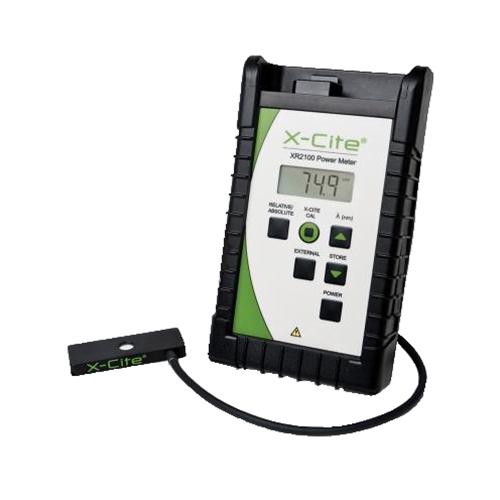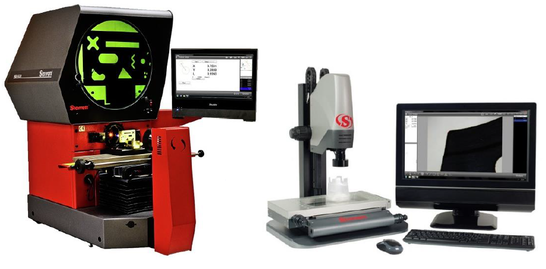Syncing your MES with an optical measurement system for automated quality checks
Syncing your MES with an optical measurement system for automated quality checks
Blog Article
The Duty of Optical Measurement Solutions ahead of time Width Strategies
Optical dimension systems have changed width, bringing a degree of accuracy that was when unbelievable. You could be amazed to discover exactly how these modern technologies, based on basic principles like representation and interference, are applied across different sectors. Their non-contact capacities not only improve precision but also simplify processes. As you discover further, you'll uncover exactly how these systems are forming the future of measurement and quality assurance.
The Advancement of Metrology: A Historical Point Of View
As you explore the history of width, you'll locate that its development reflects mankind's mission for precision and standardization. From old people using body parts as units of dimension to the advancement of standard weights and steps, each action reveals our desire for precision. The Egyptians developed the pyramids utilizing precise measurements, while the Romans progressed design with their innovative measuring tools.
During the Renaissance, scientific developments shifted the focus toward extra empirical techniques, leading the way for contemporary width. The introduction of the metric system in the late 18th century noted a significant milestone, establishing global standards. Throughout the 20th century, technical improvements better transformed assessment, allowing highly accurate dimensions in different fields.
Today, width continues to develop, integrating digital modern technology and automation. This background highlights not simply the value of measurement but likewise our relentless search of enhancing accuracy and uniformity in our increasingly complex world.
Concepts of Optical Measurement Solutions
Comprehending the principles behind optical measurement systems is crucial for accurate results in metrology. You'll intend to take into account fundamental optical concepts, dimension accuracy aspects, and effective system calibration methods. Each of these aspects plays a crucial duty in guaranteeing your dimensions are exact and reliable.
Basic Optical Concepts
While exploring optical measurement systems, you'll encounter basic optical concepts that develop the foundation of accurate data procurement. Light behaves in foreseeable means, and comprehending these behaviors-- like reflection, diffraction, and refraction-- is essential for efficient dimensions. You'll utilize lenses and mirrors to control light and focus it onto your target, making certain precision in your analyses. In addition, the wave nature of light enables disturbance patterns, which can enhance measurement resolution. Polarization can additionally play a key duty in distinguishing signal from noise, boosting the clarity of your outcomes. By grasping these principles, you'll be furnished to utilize optical innovations effectively, leading the way for improvements in assessment and guaranteeing your measurements are both reliable and repeatable.
Dimension Accuracy Factors
To accomplish high dimension accuracy in optical systems, a number of factors come right into play, affecting the integrity of your outcomes. First, the top quality of the optical elements matters substantially. Top notch lenses and detectors minimize aberrations and noise, ensuring your dimensions are precise. Second, ecological conditions like temperature and humidity can affect measurements, so preserving a secure environment is vital. Third, the placement of the optical system is vital; even minor imbalances can result in significant mistakes. The wavelength of light used influences the resolution and accuracy of your measurements. By dealing with these elements, you can boost the total efficiency of your optical dimension systems, bring about more precise and reliable results in your metrology applications.
System Calibration Techniques
Attaining high measurement precision is only part of the equation; proper system calibration techniques are just as essential in optical dimension systems. To guarantee your system supplies trustworthy outcomes, you ought to regularly calibrate it using common recommendation products. Begin by changing the optical parts, like lenses and mirrors, to decrease methodical errors. Next off, use well-known dimensions to validate the system's output and make essential modifications. It's additionally crucial to account for ecological elements-- temperature level and moisture can impact measurements. Apply a routine calibration schedule to preserve consistency with time. Finally, record all calibration procedures and results; this will assist you track efficiency and attend to any type of drift in accuracy. With these strategies, you'll improve the reliability of your optical measurement system.
Key Technologies Behind Optical Measurement
Optical measurement systems rely upon several key modern technologies that enhance precision and effectiveness in metrology. One necessary innovation is interferometry, which utilizes the disturbance of light waves to measure tiny displacements and surface abnormalities with extreme precision. You'll additionally discover laser scanning systems, which capture in-depth 3D information of things quickly, making them very useful for dimensional evaluation.
Furthermore, CCD and CMOS sensing units play a significant role in converting light right into electrical signals, permitting high-resolution imaging and precise measurements. Advanced algorithms for image handling even this content more boost measurement accuracy by evaluating data in actual time, straining sound and boosting features.
Ultimately, fiber optics supply versatility and the capability to gauge in hard environments while maintaining signal integrity. By leveraging these modern technologies, you can achieve superior cause your assessment jobs, ensuring that your measurements are both precise and trusted.
Applications of Optical Measurement in Market
As industries progressively demand accuracy and performance, the applications of optical measurement systems have become crucial throughout numerous industries. In click manufacturing, these systems assist you monitor dimensions and tolerances in real-time, ensuring quality assurance without time-consuming hand-operated checks. In the vehicle market, optical dimensions aid in lining up components with precision, enhancing security and performance.
In electronics, you're making use of optical techniques to inspect minute features on circuit card, spotting issues that could result in failings. The aerospace sector gain from non-destructive testing methods, allowing you to analyze materials and elements without jeopardizing their integrity.
Optical measurement also plays an essential role in fabrics, making sure fabric dimensions meet specific specs. optical measurement systems. With their ability to provide high-resolution information promptly, these systems equip you to make educated decisions, simplify procedures, and ultimately drive innovation across your sector
Enhancing Precision and Performance in Measurements
When you consider improving accuracy in measurements, precision in your measurement strategies is necessary. By enhancing these processes, you can achieve quicker results without giving up top quality. Let's discover exactly how taking on innovative optical measurement systems can elevate both accuracy and performance in your work.
Accuracy in Measurement Techniques
Precision in dimension methods is essential for attaining dependable outcomes in width, specifically given that little discrepancies can lead to significant errors. By making use of innovative optical dimension systems, you can enhance the accuracy of your dimensions. In addition, precise measurements enable you to maintain top quality control, making sure that items satisfy rigorous specs.
Simplifying Dimension Procedures
To boost precision and efficiency in dimensions, improving your measurement procedures is crucial. Begin by embracing optical measurement systems that give real-time information, reducing the moment invested in manual recording. These systems frequently incorporate seamlessly with existing software application, allowing you to automate data collection and analysis.
Next, systematize your dimension procedures. By implementing consistent treatments, you reduce variability and enhance repeatability. Do not neglect to on a regular basis adjust your devices to guarantee its precision.

The Effect of Optical Measurement on Research and Growth
As researchers undertaking to press the borders of development, optical dimension a fantastic read systems have actually ended up being crucial devices in the advancement procedure. These systems supply you with exact, real-time data that improves your capability to analyze complicated products and frameworks. In different fields, from biotechnology to aerospace, you count on optical dimensions to boost and maximize designs item efficiency.

With high-resolution imaging and non-contact approaches, you can reduce example disruption, enabling for even more exact outcomes. This capability to record minute information increases your R&D cycle, allowing you iterate styles quickly and successfully. Furthermore, optical dimension promotes partnership throughout techniques, as the data produced is commonly quickly interpretable and shareable.
Ultimately, integrating optical dimension systems right into your research not just improves productivity however also strengthens your understanding of the phenomena you study. By leveraging these sophisticated strategies, you're better furnished to introduce and stay ahead in a competitive landscape.
Future Trends in Optical Dimension Systems
With the rapid improvement of modern technology, you're likely to see considerable shifts in optical measurement systems that will certainly redefine their application across numerous sectors. You'll notice a step toward raised automation and combination of expert system, permitting real-time data evaluation and improved accuracy. Miniaturization is one more fad; compact devices will certainly make it possible for dimensions in tighter rooms, making them ideal for fields like aerospace and biomedical applications.
Expect to see systems that can run in tough settings, offering dependable measurements in extreme problems. As these modern technologies merge, you'll find that optical measurement systems not just boost accuracy but also enhance workflows, eventually driving technology and performance in your jobs.
Often Asked Concerns
Just How Do Optical Measurement Equipments Compare to Conventional Measurement Techniques?
Optical measurement systems offer higher accuracy and faster outcomes contrasted to conventional methods. You'll discover they catch even more data points accurately, decreasing human mistake and boosting reliability, making them a preferred option in numerous applications.
What Industries Advantage Many From Optical Dimension Equipments?
You'll find markets like aerospace, auto, and electronics benefit most from optical dimension systems. These industries depend on specific measurements to assure high quality and performance, improving effectiveness and lowering expenses via innovative modern technology.

Are Optical Dimension Equipments Expensive to Carry Out?
Optical measurement systems can be expensive to execute, but their precision and performance frequently warrant the cost. Purchasing such modern technology can result in considerable long-lasting savings and enhancements in quality throughout various applications.
What Skills Are Called For to Run Optical Dimension Solutions?
To operate optical dimension systems, you'll need solid logical abilities, interest to detail, and proficiency in software tools. Familiarity with optics and an understanding of dimension concepts will additionally boost your effectiveness and performance.
How Do Ecological Elements Influence Optical Measurements?
Environmental aspects like temperature, humidity, and air high quality can misshape optical measurements. You'll observe variations in precision because of light interference or refraction. optical measurement systems. Maintaining secure problems is necessary for reliable and accurate optical dimension outcomes
Verdict
In summary, optical dimension systems are transforming metrology by providing unrivaled accuracy and effectiveness. By harnessing innovative concepts and technologies, these systems enhance accuracy while minimizing disturbances in numerous industries. As you check out future trends, you'll see exactly how the integration of AI and automation will certainly proceed to elevate dimension methods, driving advancement and enhancing quality assurance. Embracing these innovations will be crucial for staying affordable and achieving quality in your area.
Attaining high dimension accuracy is just component of the equation; appropriate system calibration methods are just as essential in optical measurement systems.When you believe about enhancing accuracy in dimensions, accuracy in your measurement strategies is essential. By making use of advanced optical measurement systems, you can enhance the accuracy of your measurements.To boost precision and efficiency in dimensions, improving your measurement procedures is necessary. Just How Do Optical Measurement Systems Contrast to Conventional Measurement Techniques?
Report this page